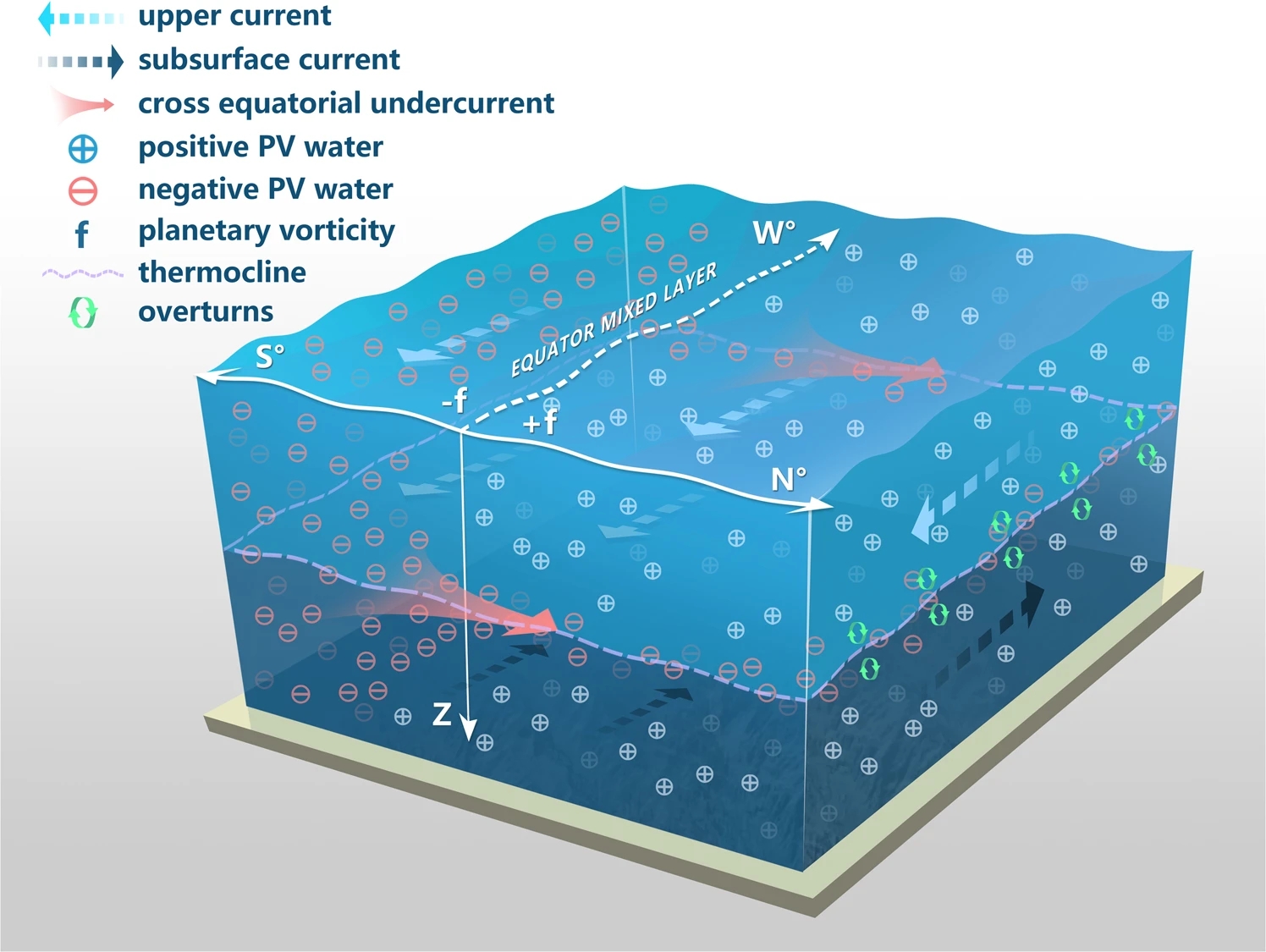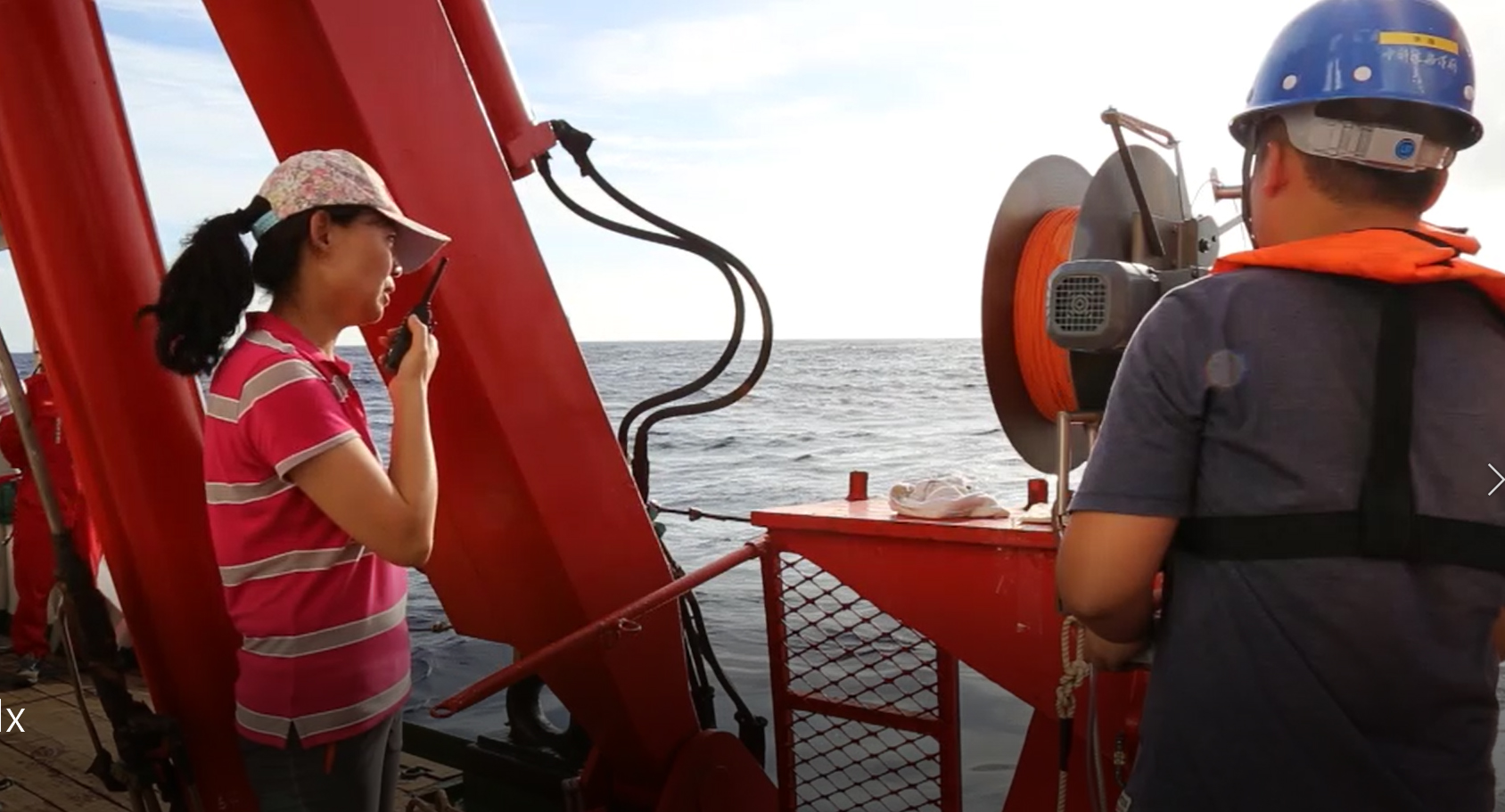The discovery of subsurface ocean mixing in the equatorial ocean thermocline will shape our climate understanding and predictability
Hui Zhou, William Dewar, Wenlong Yang, Hengchang Liu, Xu Chen, Rui Li, Chenglong Liu & Ganesh Gopalakrishnan
Published in Communications Earth & Environment, FEB 2022
Mixing in the ocean is a poorly understood process that is recognized to be significant to climate. The mixing of ocean water – the change in properties including salinity, nutrients, gas and temperature that results from the mechanical force generated by winds, tides, cooling and warming – affects carbon and heat uptake as well as the large-scale ocean climate. A fundamental question of recent interest is if large ocean currents, like the Gulf Stream, the Kuroshio, can contribute to mixing, as most of the ocean kinetic energy is contained in large-scale currents and the vigorous geostrophic eddy field. The answer to this question promises to add considerably to our ability to build realistic mixing into ocean models, and thereby to improve our ability to predict climate in this era of climate change. A few recent studies have proposed pathways by which large scale currents can directly drive mixing, but the results have suggested those pathways are limited to the ocean surface or near topographic boundaries.
Recently, an international research team led by Dr. Hui Zhou from the Institute of Oceanology, Chinese Academy of Sciences (IOCAS) provides the first observational and numerical evidence of the existence of key mixing pathways that exist far beyond the ocean’s surface and known boundaries. The key recognition of the study is the critical role played by the equator, and the exchange of water across it, that for dynamical reasons opens the pathways in a rather general way.

Fig1. The opposite directions of surface and subsurface currents provide the strong shear, and the cross-equatorial undercurrent provides the negative potential vorticity water, satisfying the necessary condition of overturns associated with symmetric instability. The axis W means westward, N means northward, S means southward, and Z means downward.
The results of the team’s four-year study have been published in the journal Communications Earth & Environment.
“We have observed this result in the western equatorial Pacific, but there is little reason to expect it can’t happen anywhere near the equator,” said Hui Zhou. “And, since the equatorial ocean occupies a vast area of the ocean, this as a mechanism is possibly of broad significance. Finally, our results, coupled with those of a previous study in the same region, hint at a connection of this process to different ocean states associated with El Niño - Southern Oscillation (ENSO).”
This work is also a typical illustration of the importance of observation, which inspires the recognization of a natural-sourced force in driving the mixing that though to be an external force by theory.

Fig2. Field operations of a free-falling microstructure profiler in 2017 on the R/V KEXUE on the NSFC Western Pacific Ocean Open Research Cruise
Hui Zhou from the Institute of Oceanology, Chinese Academy of Sciences, led the study. Prof. William Dewar from Florida State University, and Dr. Xu Chen from Florida Agricultural Mechanical University are co-corresponding authors of this study. Other contributors include researchers from Pilot National Laboratory for Marine Science and Technology in Qingdao, Beijing Institute of Applied Meteorology, State Key Laboratory of Geo-Information Engineering in Xi’an, Laboratoire de Glaciologie et Geophysique de l’Environnement, and Scripps Institution of Oceanography.
This study was funded by the Strategic Priority Research Program of the Chinese Academy of Sciences, National Natural Science Foundation of China, the National Science Foundation, and the French Ministry of Research.
Zhou, H., Dewar, W., Yang, W. et al. Observations and modeling of symmetric instability in the ocean interior in the Northwestern Equatorial Pacific. Commun Earth Environ 3, 28 (2022). https://doi.org/10.1038/s43247-022-00362-4